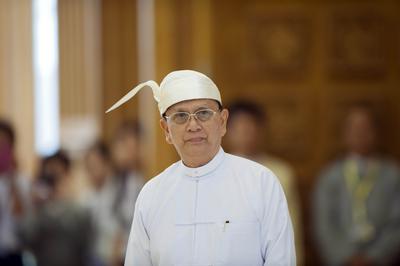ASEAN is currently working to form an overarching community based on deep political-security, economic and socio-cultural pillars.
With an average yearly GDP growth of 6 per cent over the last decade and an internal market of 620 million people, ASEAN’s economy is rapidly expanding. In 2012, its 10 member countries’ average per-capita GDP was about US$3800 — half-way between India’s US$1600 and China’s US$6100. In the same year, ASEAN had an impressive 7 per cent of global exports, and its aggregate GDP covered about 3.3 per cent of the world’s total — double its share in 1990.
ASEAN’s economic success has echoed the group’s increasing importance as an institution for maintaining political security and peace in the region. In recognition of the increasingly central role ASEAN has been playing in Asia’s institutional architecture, its chair and secretary-general are now regularly invited to participate in G20 meetings.
At the weekend, ASEAN leaders gathered in Nay Pyi Taw for their 24th Summit: the first one to be held in Myanmar.
Myanmar’s future depends on ASEAN’s. In the early 1960s Myanmar was ranked among Asia’s most promising economies. But it stagnated under a long period of political repression and economic despair until it re-emerged under the leadership of President Thein Sein. And now it has the chance to catch-up with fellow ASEAN members. According to Asian Development Bank (ADB) projections, between 2010 and 2030 Myanmar’s GDP has the potential to average 8 per cent annual growth. The country can reach upper-middle income status in the next two decades, as its real per-capita income rises 4.5 times.
ASEAN’s economic growth potential is also high.A recent ADB Institute study suggests that by 2030 ASEAN may reach OECD living standards — assuming its aggregate GDP continues to grow by an average 6.4 per cent annually.
But to fulfil these aspirations ASEAN must implement deep domestic structural reforms together with bold initiatives for regional cooperation, or risks GDP growth slowing down to no more than 3 per cent.
A combination of national and regional policies is needed to maintain macroeconomic stability and drastically reduce the development gap both across and within countries. A proper policy mix is also needed to enhance competitiveness and innovative capability through a strategy that promotes ‘made-in-ASEAN’ brands, focusing on SMEs which form the backbone of the regional economy. And ASEAN must also adopt ‘green growth’ strategies to promote economic development while protecting the environment and ensuring energy security.
Myanmar’s challenges mirror those faced by ASEAN as a group: strengthening internal cohesion and economic integration with other ASEAN members is prerequisite for prosperity.
The ASEAN chair is strategically important for Myanmar not only to emerge as a regional leader but also to promote the group’s cohesion — as the Summit showed, the South China Sea issue can still divide members — and progress with the ASEAN Economic Community (AEC). Although intra-ASEAN tariffs are now almost zero, extensive non-tariff barriers remain a problem. Complicated business licensing procedures and a lack of consistent regulations on investment, competition policy and intellectual property rights keep production and trade costs high, obstructing the AEC.
With the AEC implementation targets difficult to reach by the end of 2015, some experts think that until 2030 ASEAN should focus solely on completing the AEC. However, a progressive view suggests that unless more ambitious integration targets are set, ASEAN risks becoming irrelevant to its members and losing centrality in Asia’s institutional architecture.
Here, Myanmar has a chance to play a strategic role. The AEC is just the starting point of a journey that leads to a truly ‘borderless’ economic community — where ASEAN-wide standards and institutions are in place to govern the newly created regional market.
But ASEAN should not copy the European Union. It must maintain its flexibility and pragmatism, without creating a fat regional bureaucracy. Still, institutional reform is needed. Equal budget contribution and consensus decision-making must adjust to reflect the need for efficiency and timeliness imposed by the widening economic agenda. Reforms are also essential to improve feedback systems, introduce sanctions, compensate groups and individuals harmed by integration, and increase the secretariat’s human and financial resources — its allotment of 90 professional staff has been almost static for the last 20 years despite its expanding mandate.
The theme Myanmar has chosen to mark its first ASEAN chair is: ‘Moving Forward in Unity to a Peaceful and Prosperous Community’. The 24th Summit has focused on intensifying cooperation to nurture SMEs, enhance public-private partnership to develop infrastructure, and move the AEC beyond 2015. It marks an important milestone on Myanmar’s way towards regional leadership and in laying the ground for ASEAN’s regional integration plans.
Giovanni Capannelli is Principal Economist and Special Adviser to the Dean at the Asian Development Bank Institute, Tokyo. The views expressed in this article are uniquely of the author and do not necessarily reflect those of the Asian Development Bank Institute, the Asian Development Bank, or its Board of Directors.

